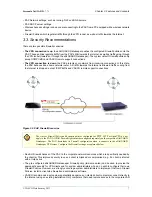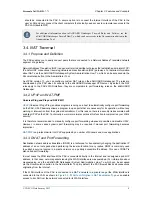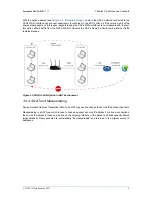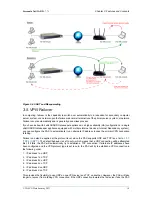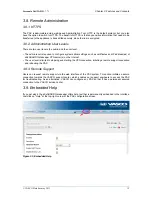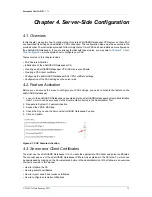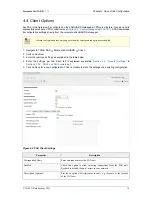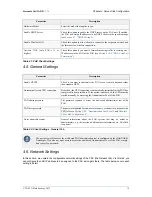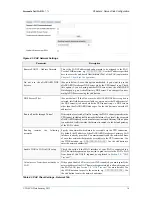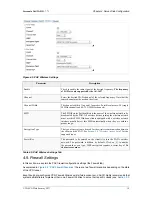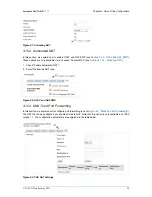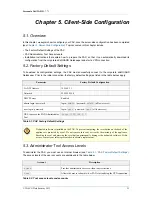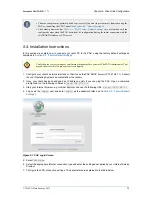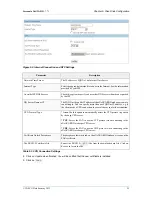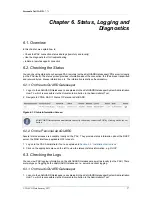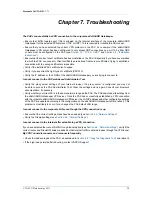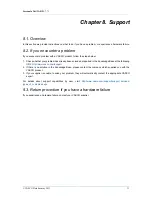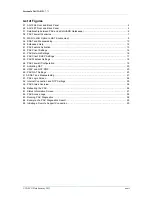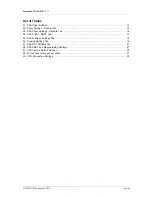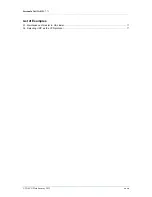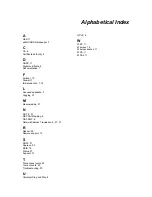
Personal aXsGUARD - 7.7.1
Chapter 4. Server-Side Configuration
© VASCO Data Security 2013
21
Parameter
Description
Description
A description for the new NAT rule, e.g. mail.
Source IP
Specify the Source IP address (range) to which the port forwarding rule
must be applied. Use the CIDR notation to specify a range. If left empty,
the rule applies to any source IP address.
Protocol
Select the appropriate protocol from the drop-down list (TCP or UDP).
Coming to IP
The rule is applied to packets matching this destination address, e.g.
80.90.100.200
. Leave this field empty if you have a public IP address
that is dynamically assigned by your ISP.
Port
Enter the port number that must be matched, e.g. 25 (for SMTP traffic).
Destination IP
The IP address of the host to which traffic is forwarded. Only one IP address
may be entered, e.g.
192.168.1.100
.
Destination Port
The port number to which traffic must be forwarded, e.g. 443.
Table 4.7. PAX NAT Settings Tab
Control Buttons
• Add: Use this button to add a NAT rule, once your parameters - as explained in the table above - have
been entered.
• Clear: Use this button to clear the data that has been entered in the NAT rule fields.
4.10.4. SNAT and Masquerading
In this section, we explain how to configure SNAT and Masquerading (see
Section 3.4.4, “SNAT and
Masquerading”
). The NAT tab is only available if you enabled Activate NAT. Note that this option is only
available as of PAX version 1.1. The configuration parameters are explained in the table below.
Figure 4.10. SNAT and Masquerading
Parameter
Description
Description
A description for the new NAT rule, e.g. ssh.

